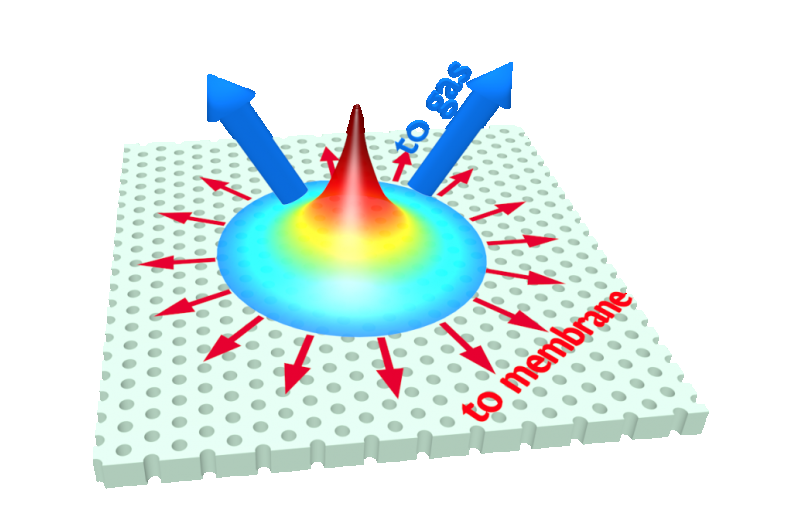Scientists control the flow of heat and light in photonic crystals

Scientists from the MESA+ Institute for Nanotechnology at the University of Twente in the Netherlands and Thales Research & Technology, France, have found a way to control heat propagation in photonic nano-sized devices, which will be used for high speed communications and quantum information technologies. Their results are published in the leading American journal Applied Physics Letters on 30 April 2015.
Heat controls light
Photonic crystals, are photonic structures with nano-sized geometrical features, are useful for the light control, for example, they can be used to make ultra-compact integrated circuits for light. One of the simplest and most versatile ways to control these circuits is by heating them, thereby locally changing their properties. However, it is extremely important to apply heat at the right place, but this is difficult because heat tends to diffuse. As a consequence neighboring elements will be affected by the heat, producing unwanted changes in structures with multiple elements. However, heat propagation in thin membranes also depends on the surrounding media, thus providing an extra degree of freedom to control the heat distribution.
Thus, the temperature distribution across the membrane can be reduced by changing the embedding medium. The faster the heat diffuses away, the narrower the temperature distribution is in the photonic crystal membrane.
The researchers experimentally and theoretically show that significantly better control is obtained using high thermal conductivity gases as the surrounding media. They found that when helium is used as the ambient gas, the width of the temperature distribution in the structure is reduced by 30% when compared to air. The results the researchers obtained are important because they enable thermal tuning of coupled resonators which will be valuable in the quest to build programmable optical circuits.
More information: Applied Physics Letters, Vol. 106, p. 171113 (2015)
Journal information: Applied Physics Letters
Provided by University of Twente





















